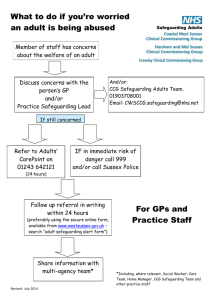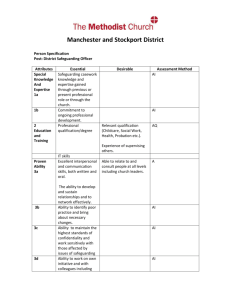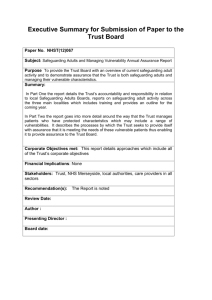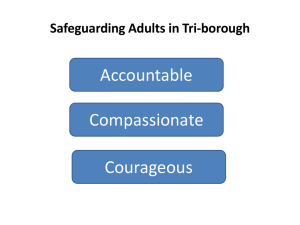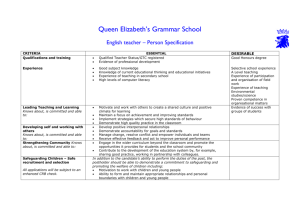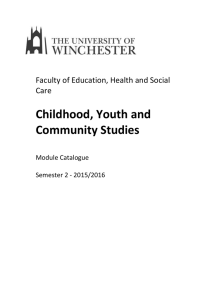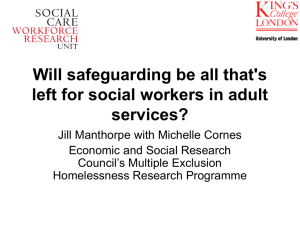CENTRE FOR PROFESSIONAL EDUCATION SAFEGUARDING AND DISCLOSURES PROCESS Introduction
advertisement
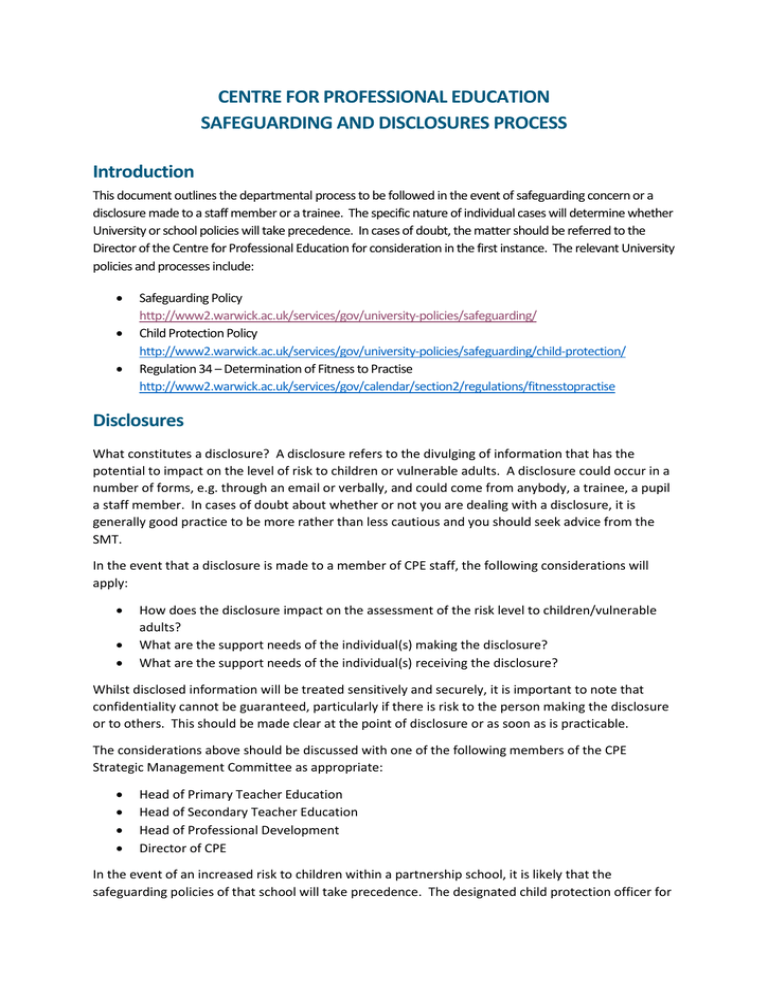
CENTRE FOR PROFESSIONAL EDUCATION SAFEGUARDING AND DISCLOSURES PROCESS Introduction This document outlines the departmental process to be followed in the event of safeguarding concern or a disclosure made to a staff member or a trainee. The specific nature of individual cases will determine whether University or school policies will take precedence. In cases of doubt, the matter should be referred to the Director of the Centre for Professional Education for consideration in the first instance. The relevant University policies and processes include: Safeguarding Policy http://www2.warwick.ac.uk/services/gov/university-policies/safeguarding/ Child Protection Policy http://www2.warwick.ac.uk/services/gov/university-policies/safeguarding/child-protection/ Regulation 34 – Determination of Fitness to Practise http://www2.warwick.ac.uk/services/gov/calendar/section2/regulations/fitnesstopractise Disclosures What constitutes a disclosure? A disclosure refers to the divulging of information that has the potential to impact on the level of risk to children or vulnerable adults. A disclosure could occur in a number of forms, e.g. through an email or verbally, and could come from anybody, a trainee, a pupil a staff member. In cases of doubt about whether or not you are dealing with a disclosure, it is generally good practice to be more rather than less cautious and you should seek advice from the SMT. In the event that a disclosure is made to a member of CPE staff, the following considerations will apply: How does the disclosure impact on the assessment of the risk level to children/vulnerable adults? What are the support needs of the individual(s) making the disclosure? What are the support needs of the individual(s) receiving the disclosure? Whilst disclosed information will be treated sensitively and securely, it is important to note that confidentiality cannot be guaranteed, particularly if there is risk to the person making the disclosure or to others. This should be made clear at the point of disclosure or as soon as is practicable. The considerations above should be discussed with one of the following members of the CPE Strategic Management Committee as appropriate: Head of Primary Teacher Education Head of Secondary Teacher Education Head of Professional Development Director of CPE In the event of an increased risk to children within a partnership school, it is likely that the safeguarding policies of that school will take precedence. The designated child protection officer for the school should be notified and a record of actions to date should be recorded through completion of the Safeguarding Report Form in Appendix A. The Director of CPE will share this information with the Director of Delivery Assurance (the university’s designated safeguarding officer) as appropriate. In some instances, for example when the concern relates to professional conduct, it may be more appropriate for the University to lead on follow-up actions. This might include a referral to the Fitness to Practise Committee, which consists of external professional members and is chaired by a Pro-Vice-Chancellor. In the event of any disclosure for which it is deemed that no further action is required, a formal record will still need to be kept by CPE. In practice, this is achieved through completing the Safeguarding Report Form in Appendix A and sending it to the Director of CPE. A range of support options are available to staff and trainees, from CPE, from the partnership and from the Student Support team. In the event of a referral to Student Support, it may be appropriate to share the completed Safeguarding Report Form. In such cases, this should be done with the consent of the trainee concerned. Safeguarding All safeguarding concerns, no matter how minor, must be formally recorded using the CPE Safeguarding Report Form. It is the responsibility of the Director of CPE to share safeguarding concerns with the Director of Delivery Assurance as appropriate.
